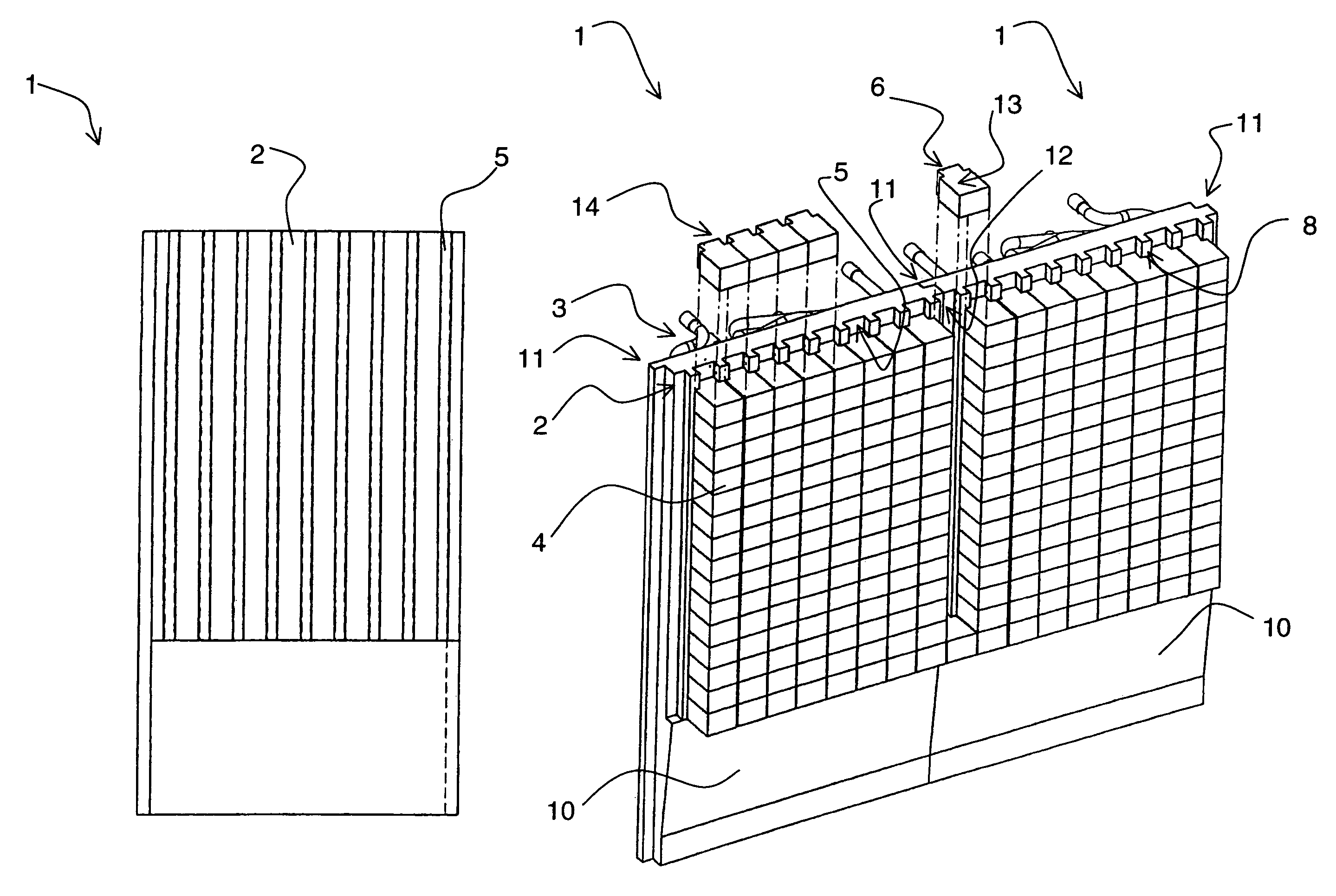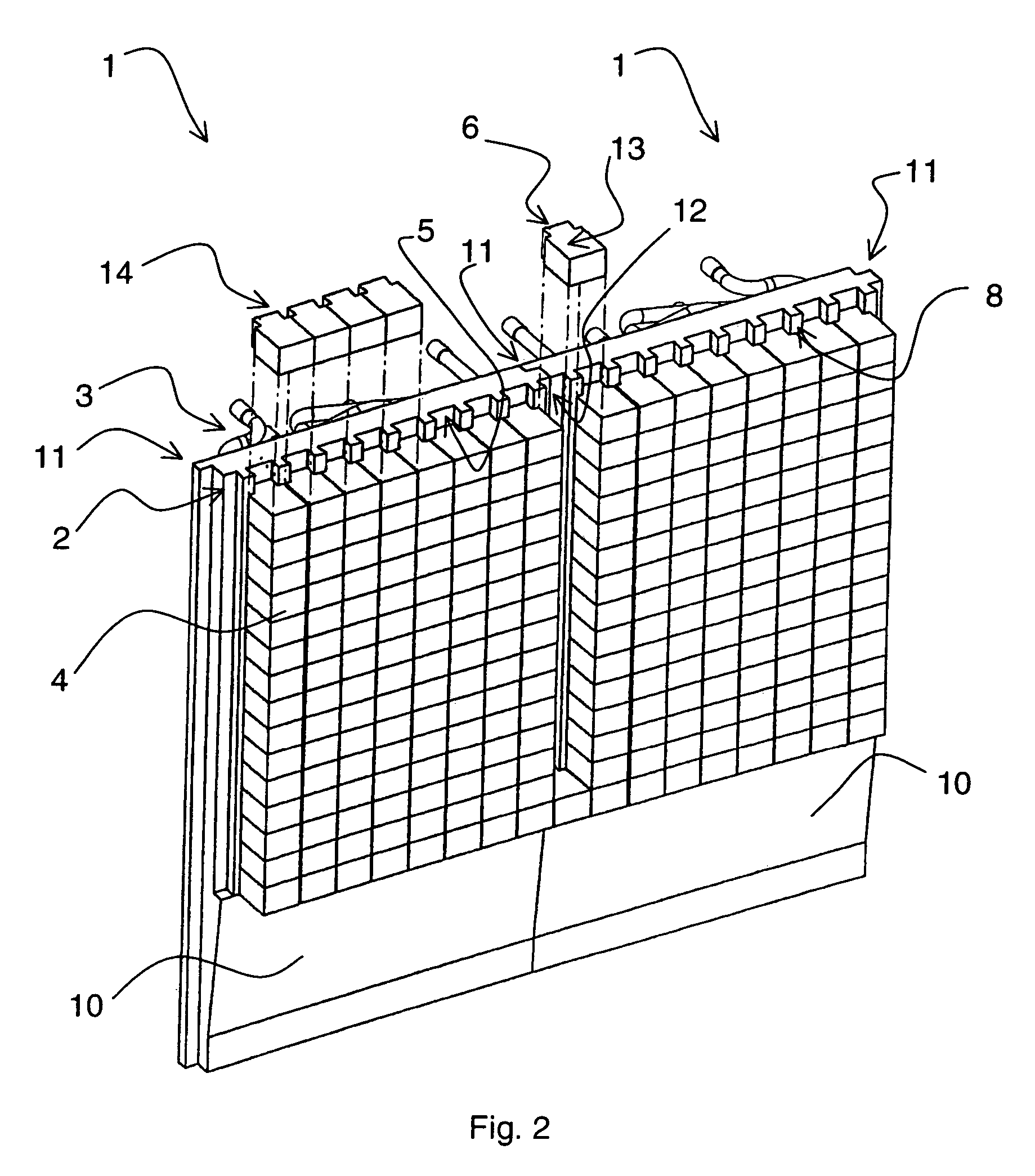Cooling element
a cooling element and cooling element technology, applied in the field of industrial reactors, can solve the problems of extreme working conditions in the reactor, weak corrosion, and weak corrosion resistance, and achieve the effects of avoiding drawbacks of prior art, avoiding seams in the structure, and good heat transfer
- Summary
- Abstract
- Description
- Claims
- Application Information
AI Technical Summary
Benefits of technology
Problems solved by technology
Method used
Image
Examples
Embodiment Construction
[0011]FIGS. 1a, 1b and 1c illustrate a cooling element 1 according to the invention, which is suited to be used for instance in the wall structure of a flash smelting furnace. FIG. 1a is a front-view illustration of the element, FIG. 1b is a side-view illustration and FIG. 1c a top-view illustration. The cooling element 1 comprises a copper housing 2 made of one single piece, in which a channel system 3 is formed for the circulation of the cooling medium. In addition, the cooling element comprises a sufficient number of lining elements 4 made of a fireproof material, such as chromium magnesite brick, which lining elements are connected to the housing 2. The housing and the lining elements are provided with elements for fastening them together. On the surface 8 of the housing, there are formed vertical grooves 5, in which the lining elements 4 are positioned in the vertical direction on top of each other, so that the whole groove is filled in the vertical direction of the cooling ele...
PUM
| Property | Measurement | Unit |
|---|---|---|
| Width | aaaaa | aaaaa |
| Width | aaaaa | aaaaa |
| Depth | aaaaa | aaaaa |
Abstract
Description
Claims
Application Information
 Login to View More
Login to View More - R&D
- Intellectual Property
- Life Sciences
- Materials
- Tech Scout
- Unparalleled Data Quality
- Higher Quality Content
- 60% Fewer Hallucinations
Browse by: Latest US Patents, China's latest patents, Technical Efficacy Thesaurus, Application Domain, Technology Topic, Popular Technical Reports.
© 2025 PatSnap. All rights reserved.Legal|Privacy policy|Modern Slavery Act Transparency Statement|Sitemap|About US| Contact US: help@patsnap.com



